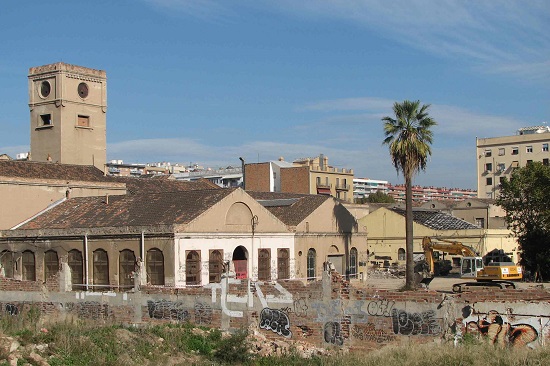University of Barcelona builds humanities and social science research campus in 22@ district
The University of Barcelona (UB) has begun the first phase of its Humanities and Social Sciences Park in the 22@ business and technological district. The opening ceremony took place in Can Jaumandreu, one of the buildings that will hold the research park, along with Can Ricart. Both of these buildings used to be factories built in the late 19th and early 20th century in what was once the industrial centre of Barcelona, known as 'the Catalan Manchester'. This new research park is the latest addition to the 22@ district, which over the past 15 years has become a hub for business and technology in Barcelona. The park represents an effort by the UB to amplify its research in the humanities and social sciences and is a complement to the Barcelona Scientific Park, which opened in 1997.

Barcelona (ACN).- The University of Barcelona (UB) has begun the first phase of its Humanities and Social Sciences Park in the 22@ business and technological district. The opening ceremony took place in Can Jaumandreu, one of the buildings that will hold the research park, along with Can Ricart. Both of these buildings used to be factories built in the late 19th and early 20th century in what was once the industrial centre of Barcelona, once known as the "Catalan Manchester." The Can Jaumandreu portion of the project has already started, and Can Ricart will be restored in two phases, the first starting in 2017 and the second one in 2019. This new research park is the latest addition to the 22@ district, which over the past 15 years has emerged as a hub for business and technology in Barcelona. The park represents an effort by the UB to amplify its research in the humanities and social sciences and is a complement to the Barcelona Scientific Park, which opened in 1997.
In addition to enhancing social sciences and humanities, the transfer of Can Jaumandreu and Can Ricart to UB by the City Council will "establish cultural and formative synergies" with the 22@ district and Poble Nou neighbourhood, according to the municipality. The Chancellor of the UB, Dídac Ramirez, thanked the city for its collaborative spirit and said that the park will be an "essential" instrument for promoting innovation in social sciences and the humanities, strengthening the 22@ business and technology district and its transformation into Barcelona's main innovation centre.
Multinational companies and other universities are also setting offices, research centres and campuses in this area of the city, located around the Diagonal Avenue, between the Glòries Square and the Fòrum area, and along the Pere IV street. This is the case, for instance, for the Pompeu Fabra University (UPF), which set up its communication campus at the 22@ district, next to the Diagonal Avenue. It is also the case of Cisco and Schneider, which are renovating Can Alier's old factory to transform it into their main offices in Barcelona as well as a research centre on smart city technologies.
Can Jaumandreu
During the first phase of building the Park, UB will only take residence in Can Jaumandreu, which will hold the offices of direction and administrative support for the Humanities and Social Sciences Park. The space, which until now has been one of the sites for Barcelona Activa (a City Council's agency for business development), will also receive the UB Centre for Digitisation of Documents (CEDI), which used to be on Còrsega Street.
Can Jaumandreu, a rehabilitated building with a floor area of more than 3,000 square metres, will be a complementary space to Can Ricart, with several functions aimed toward teaching communication arts, humanities and social sciences through the university.
Can Ricart
Can Ricart will be launched in two phases, explained the UB Chancellor. The first phase will be completed by 2017, after which the building will house a service module with an area of 1,500 square metres. This module will include Audiovisual Services, the Book Restoration Service and the History Archive. There will also be two multipurpose warehouses, 700 square metres apiece, which will host workspaces, meeting rooms and events spaces for creative innovation.
The second phase – the body of Can Ricart's renovation - will begin in 2019. Products from this phase will include reception areas, research services and facilities for use by other companies and institutions. It will be the largest part of the project by far.
With more than 7,000 square metres of usable space, Can Ricart will be the backbone of the Park, which will cost €5 million through 2019. Those responsible for the Park at UB said the project would not have a negative impact on the university's deficit since its spending is based on sustainable actions that will generate new revenue. The City Council will be in charge of the urban development, adaptation of the outer area, the entrances and necessary water and energy supplies.